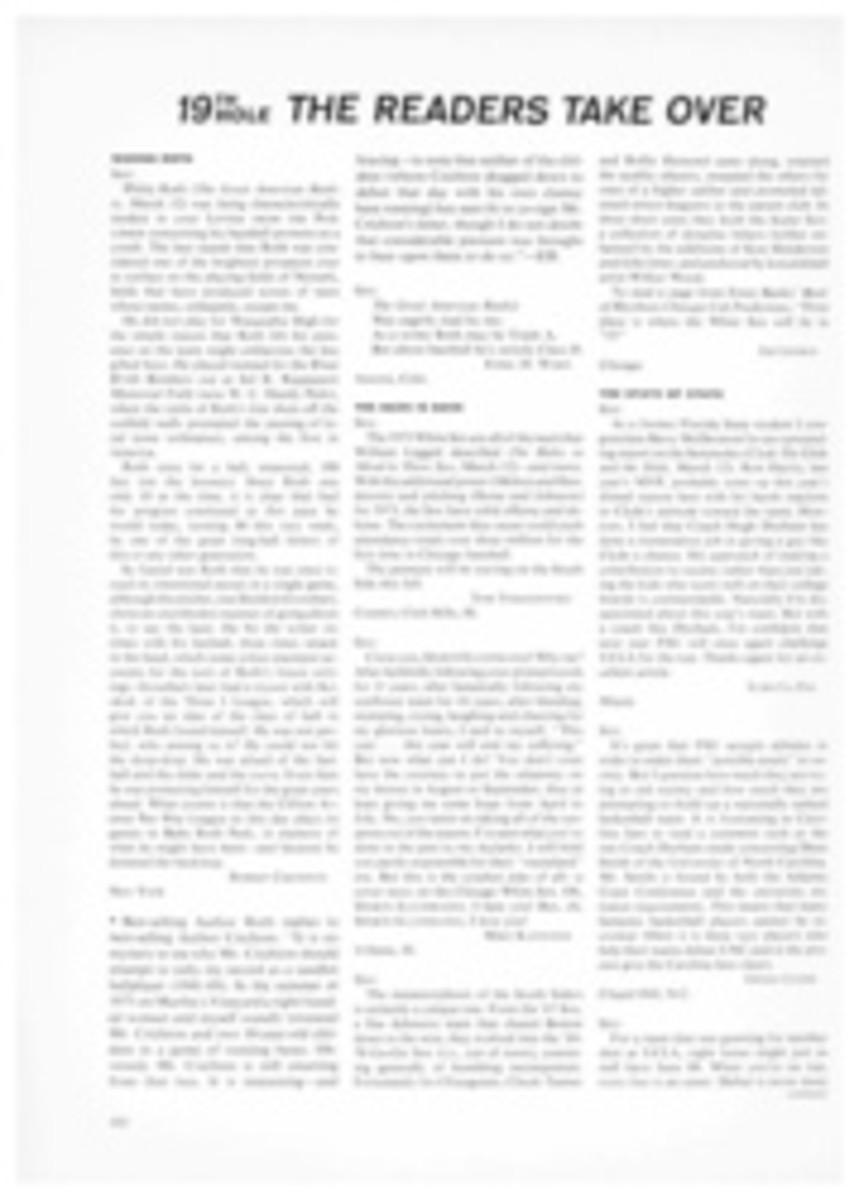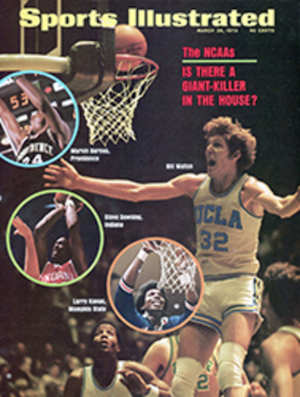
Fold it out and presto! Tenderloin is hamburger
Squash is both a vegetable and a game. More people cook it than play it. Indeed, the game is commonly thought to be the sanctuary of snobs. Although squash had its origins in a London prison around 1800, if the standard reference works may be believed, it rapidly vaulted the social scale to the point where most people now think of the game, when they think of it at all, in connection with prep schools, Ivy League colleges and exclusive clubs. Though squash players do not invariably trail Roman numerals after hyphenated names or lunch on caviar and quail wings, that is the general assumption. And close enough to the truth to turn millions off.
Now comes a Philadelphia architect hell-bent on turning them on. His name is Paul Monaghan, and he says, "Squash is the game of the future, but it's an undiscovered game. It has been hindered by its reputation."
In the U.S. today there are nevertheless some 500,000 players who have access to 2,500 private courts. These are mostly in the East. North and South Dakota, to cite two Western states, do not have a squash court between them. Played within a rectangle measuring 32 by 18½ feet for singles, 25 by 45 feet for doubles, squash utilizes a small black rubber ball and a racket with a smaller head and a longer handle than a tennis racket. The ball is played off all four walls, and the essence of the game consists in attempting to give one's opponent an unplayable lie, so to speak. It the ball bounces on the court floor more than once, the player who hit it scores a point. The ball can come off the walls at speeds up to 125 mph, which makes squash a testing game indeed. Halt an hour of it is quite enough to exhaust most nonathletes.
What Paul Monaghan wants to do is spread the exhaustion around by bringing court costs down. A traditional court requires many narrow lengths of hard maple finished in white enamel and costs a minimum of $25,000. With the blessing of the U.S. Squash Racquets Association, Monaghan began to look for ways of reducing costs by employing preassembled walls of new materials. Last year he made his first real advance with four courts for Lehigh University in Bethlehem, Pa. Dispensing with all those maple boards, Monaghan used stressed-skin plywood panels, some as large as eight feet by 20 feet. The courts required just two days for completion of the walls—miraculous speed by conventional standards—and cost a bit less than $25,000 apiece.
Determined to cut costs further, Monaghan and his partner, Barclay White, devised the ingenious contraption in the photographs to your right, a squash court that opens and closes like an accordion. It can be installed in any field house or gymnasium and requires no more than the strength of two people to pull it out, then push it flat against the wall when the game is over. It is constructed of four-by-eight plywood panels and rolls back and forth on eight casters. This is a prototype. Monaghan says a custom copy would cost approximately $8,500, a figure that should be within the budget of many schools and clubs. Quantity production would reduce the price substantially.
"Colleges that have courts have permanent ones," says Monaghan, "but schools can't afford to give up the space. I hope the folding court will mean that kids can begin playing in school. I didn't get to play until I was in college."
John Pittenger, the Pennsylvania Secretary of Education, is enthusiastic about the possibilities of the folding court. He wants squash to be regularly played in the state's schools. "I want to get away from sports one practices only in school," he says. "Squash is a sport men and women can play all their lives. I've been playing it myself for 20 years. Track and soccer and hockey are fine, but they're for kids with plenty of spare time. You can't make time for them later. And once you've stood the cost of building the court, squash becomes a viable game in terms of money—much less expensive than golf, for example."
All of which is sweet to the ears of Monaghan, who has yet another plan to make squash freaks of us all. Last week he and White broke ground for the first commercial squash venture in this country, a squash club at Berwyn, Pa. that will function like an indoor tennis center where the customers pay to play. Berwyn is to be the first of a chain planned for urban centers, including Washington, New York, Boston, Chicago and Atlanta.
The idea of the commercial squash club came to Monaghan from England. The gentlemanly reputation of squash"" seems to have done it no harm in its native land, where clubs for the almost-common man and woman have been enjoying a boom. They are considered no more snobbish than bowling alleys over here. "Space is the key thing in Britain, and you can fit six squash courts into the space taken up by just one tennis court," says Monaghan.
These modern British squash clubs are short on starch and long on conviviality—a good fellowship lubricated by many bars. The official journal of the British Squash Rackets Association—it disdains the U.S. "cq"—recently ran a breezy article entitled Sex and Your Squash Life with a cover photograph of...an unclothed squash player. Might have been a squash player, anyway.
Monaghan and White are proceeding more cautiously. "We just want to build a first-class place where any and everybody can play," says Barclay White. "Because of the private clubs squash has been an unavailable sport. That's what we want to change. But more on the lines of a health club than a singles bar."
The two are delighted that their hobby is turning into a business. "In fact, it's just as well," says Monaghan. "I was becoming obsessed. All the other buildings I designed were beginning to look like squash courts."
TWO PHOTOS
JOHN G. ZIMMERMAN
ACCORDION COURT made its debut in the gym of Westtown School, near Philadelphia.

